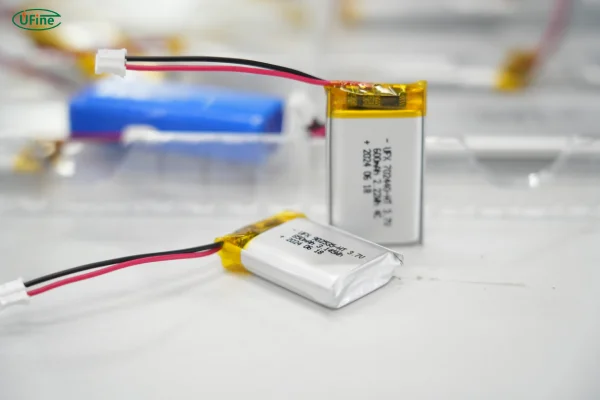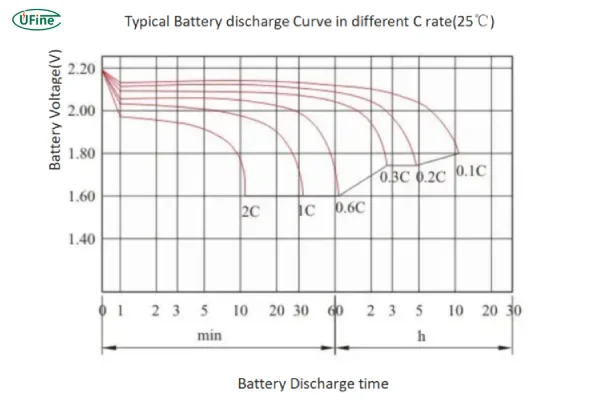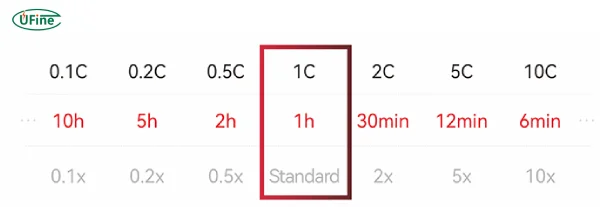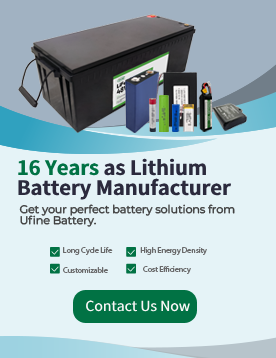
- Part 1. What is a 1C battery?
- Part 2. Effects of C Rating on lithium-ion batteries
- Part 3. Examples of C Ratings
- Part 4. Typical C Ratings for different batteries
- Part 5. What C-Rate is best?
- Part 6. Where is a 1C battery used?
- Part 7. 1C battery voltage
- Part 8. 1C battery charger
- Part 9. 1C battery price
- Part 10. Final words
Understanding battery specifications is essential for choosing the right power source for your devices. One key term to know is the 1C battery, a versatile and widely used type of lithium battery. In this article, we’ll explain what a 1C battery is, how C ratings impact performance, and where 1C batteries are commonly used.
Part 1. What is a 1C battery?
A 1C battery is designed to charge or discharge at a rate equal to its full capacity within one hour. The “C” rating serves as a measure of how quickly the battery can deliver or accept energy.
For example, a 2,000mAh 1C battery can safely discharge 2,000mA (2A) of current in one hour. Likewise, it can accept the same amount of current during charging. This balanced charge and discharge rate makes 1C batteries a popular choice for consumer electronics and portable devices.
Part 2. Effects of C Rating on lithium-ion batteries
The C rating is crucial in determining the performance and lifespan of a lithium-ion battery. A higher C rating allows for faster charging and discharging but often generates more heat, which can shorten the battery’s life.
Conversely, a 1C battery provides steady performance with minimal stress on its internal components. It balances energy output and longevity, making it suitable for devices that require consistent power delivery.
Ufine Battery High C Rate Battery
Part 3. Examples of C Ratings
Here are examples of C ratings to clarify their impact:
- 0.5C: Charges or discharges at half its capacity in two hours.
- 1C: Full charge or discharge in one hour—ideal for general applications.
- 2C: Charges or discharges in 30 minutes, suitable for high-demand devices.
- 5C and Above: Delivers rapid energy transfer, often used in drones and electric vehicles.
Choosing the right C rating ensures your battery performs efficiently and safely.
Part 4. Typical C Ratings for different batteries
Different battery chemistries and applications come with varying C ratings:
- Lead-Acid Batteries: Typically have low C ratings (0.1C to 0.3C), suitable for steady, long-term energy supply.
- NiMH Batteries: Commonly rated at 0.5C to 1C, offering moderate performance for portable electronics.
- Lithium-Ion Batteries: Often range from 1C to 3C for consumer use, with custom high-performance options available for specific needs.
If your application demands unique specifications, Ufine Battery can design and produce lithium batteries with customized C ratings, ensuring a perfect match for your device.
Part 5. What C-Rate is best?
The optimal C-rate depends on your device’s power requirements. For most consumer electronics, a 1C battery is ideal, as it provides consistent energy delivery without compromising safety or lifespan.
Devices like drones or power tools, which require bursts of high power, benefit from batteries with higher C ratings, such as 5C or 10C. However, these batteries can experience faster wear and tear if not used properly.
Ufine Battery specializes in crafting lithium batteries tailored to specific applications, ensuring you get the best C-rate for your needs.
Part 6. Where is a 1C battery used?
1C batteries are incredibly versatile and are used across various industries and applications:
- Consumer Electronics: Smartphones, tablets, and laptops rely on 1C batteries for stable performance.
- Portable Devices: Cameras, power banks, and flashlights often use 1C batteries.
- Electric Vehicles: Many e-bikes and scooters utilize 1C-rated lithium batteries for balanced energy delivery.
- Renewable Energy: Solar storage systems frequently rely on 1C batteries for consistent energy storage and discharge.
If your application requires a custom solution, Ufine Battery can design a 1C battery to fit your exact requirements, whether it’s size, voltage, or capacity.
Part 7. 1C battery voltage
The voltage of a 1C battery depends on its chemistry and configuration:
- Lithium-Ion Batteries: Typically have a nominal voltage of 3.7V per cell. Packs can combine multiple cells for higher voltages.
- Lead-Acid Batteries: Often available in 6V or 12V, suitable for automotive and backup power.
- NiMH Batteries: Operate at 1.2V per cell, ideal for small gadgets.
Part 8. 1C battery charger
Using the right charger is critical to maintaining the performance and safety of your 1C battery. Key considerations include:
- Charge Rate: Match the charger’s current output to the battery’s 1C rating.
- Voltage Compatibility: Ensure the charger matches the battery’s voltage.
- Smart Chargers: These prevent overcharging and overheating by automatically adjusting the charge rate.
- Temperature Control: Advanced chargers monitor battery temperature to enhance safety.
Part 9. 1C battery price
The price of a 1C battery varies depending on its type, capacity, and brand:
- Lead-Acid Batteries: $20–$100, depending on size and application.
- NiMH Batteries: $10–$50 for consumer-grade options.
- Lithium-Ion Batteries: $15–$200, with high-performance models costing more.
- Custom Batteries: Prices vary based on specifications but offer tailored performance for unique needs.
Part 10. Final words
The 1C battery is a versatile and dependable power source, suitable for various applications. Its balanced charge and discharge rate make it a popular choice for consumer electronics, renewable energy systems, and electric vehicles.
For those with unique requirements, Ufine Battery offers custom lithium battery solutions tailored to specific rates, sizes, voltages, capacities, and shapes. With 17 years of experience, Ufine Battery ensures you receive the perfect battery for your needs.
Feel free to contact Ufine Battery to explore tailored solutions that meet your unique energy requirements.
Related Tags:
More Articles

Battery Load Test: A Comprehensive Guide
Step-by-step battery load test guide for car, solar & industrial use. Learn how to load test a battery, interpret voltage charts, and avoid common mistakes.
The Comprehensive Guide to Battery Balancing and Battery Balancer
Discover how battery balancers improve lithium battery performance, lifespan, and safety. Learn types, functions, and tips to choose the right balancer.
What Is the Best Voltage for a Chainsaw Battery?
Compare 12V-80V chainsaw batteries for light pruning, medium firewood, and professional cutting. See best battery chainsaw with runtime charts and safety tips.
Lithium VS. Alkaline Batteries: A Comprehensive Comparison
Lithium batteries last 3–7× longer than alkaline and perform better in cold weather. Compare lifespan, cost, safety, and best uses to choose the right battery.
Comparing Lithium-Sulfur and Lithium-Ion Batteries: Which is Right for You?
Compare lithium-sulfur (Li-S) and lithium-ion batteries on energy, lifespan, cost, safety, and applications. Best choice for drones, EVs, and electronics.





